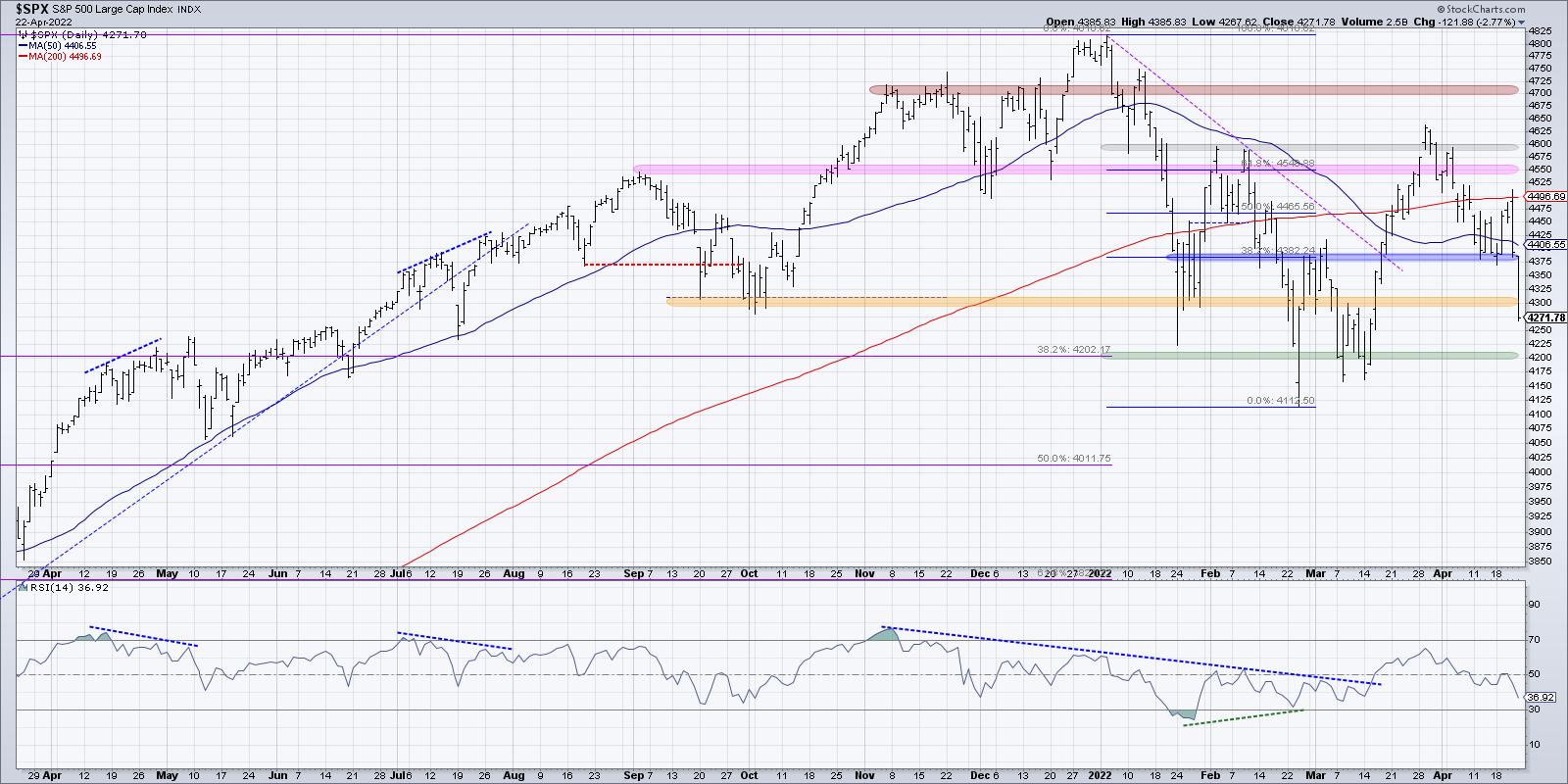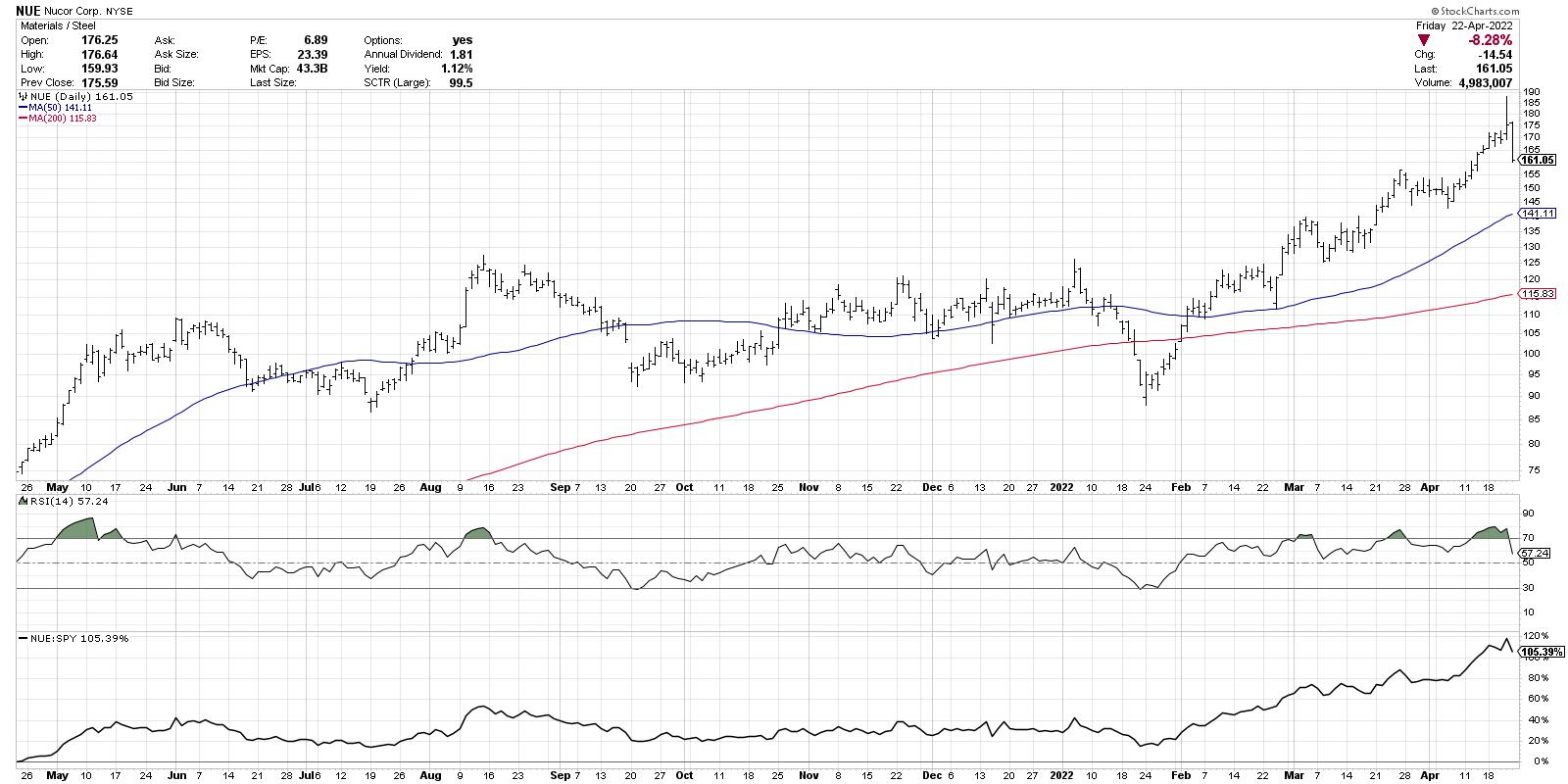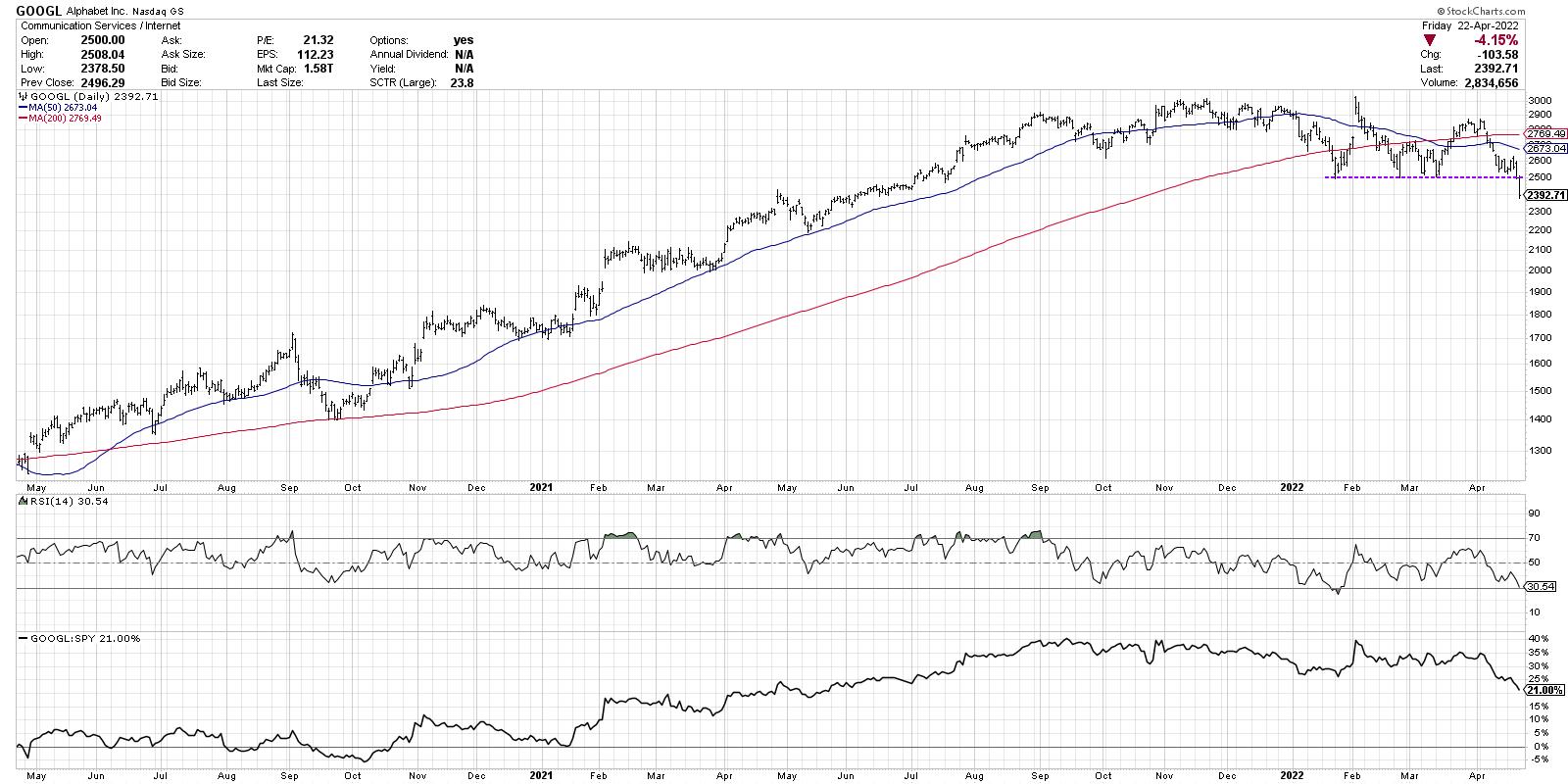Back in January, I shared a video with four potential outcomes for the S&P 500 index. These ranged from the "very bullish" view, where the SPX would rise to 5000 and beyond to the "very bearish" view involving a retest of long-term Fibonacci levels.
In the end, the three subsequent months have played out very closely to the "mildly bullish" scenario that we described in late January.

The S&P retested the January low in February and March but didn't really get much below that level. On the upside, the index shot up to 4600, but numerous attempts to push higher quickly fizzled out. Now we are left with the reality that, with all the noise and all the volatility, the S&P 500 is right about the same level that it was in late January!
So what's next? I posted a new video this week with four new scenarios for the S&P 500 in the coming months, ranging from a very bullish scenario to a very bearish scenario. Here's a quick breakdown of each of these potential outcomes.
1. The Very Bullish Scenario
In this first scenario, the S&P 500 would retest all-time highs around 4800. For that to happen, we would need to see some improvement during earnings season. Now I don't mean that companies will have to report better numbers (although that would certainly help), but rather that stocks would have to do better when the company does well.
Look at the chart of TSLA, NUE and others and you'll see what I mean. Decent quarter, strong gap higher the next morning, but, by the end of the day, the price is right back where it started the day before.

The very bullish scenario would have to involve stocks performing better on earnings wins, and the market would need to shrug off any further developments on the geopolitical front, as well as the prospect of further Fed rate hikes.
2. The Mildly Bullish Scenario
The second option would essentially be a repeat of the first quarter of 2022. We spent the last 12 weeks essentially rangebound between 4300 on the lower end and 4600 on the upper end. The mildly bullish scenario would assume more of the same.
Now it's worth noting that, while the major averages have been choppy and volatile, there are plenty of individual names and industry groups which have been in strong uptrends. There have also been stocks that have been struggling as they pound out new 52-week lows.
So this second scenario could mean even more differentiation between what's working and what's not on a single stock basis. But overall, the indexes don't make any major headway to the upside or the downside.
3. The Mildly Bearish Scenario
Now we get to some of the more painful potential outcomes over the next quarter. The third choice would include a failure to eclipse the February and March highs (we've already seen a meaningful pullback from the 200-day moving average to end this week!) and the February and March lows would certainly be in play.
The bearish scenarios both involve a new low (if not multiple new lows) for 2022, with 4000 being a reasonable downside target based on a 50% retracement of September 2020 to January 2022.
In this scenario, the prospect of higher interest rates, continued inflationary pressures, and potential escalation in Ukraine could help to fuel further downside for stocks as investors go full risk-off. Also, growth stocks like NFLX, GOOGL and others would continue to break through key support levels as investors realize the floor for stocks is further down.

4. The Very Bearish Scenario
Now we get to the most negative outcome of all, the very bearish scenario. In this case, all of the catalysts mentioned in the mildly bearish scenario play out, but the market reaction is much more severe. As investors move to full risk-off mode, the S&P 500 blows right through the 4200 level as well as 4000. 3800 becomes the new support as we look to long-term Fibonacci retracements to identify potential downside targets.
You may find that one of these four scenarios seems like the most likely, and perhaps one of them seems absolutely impossible. The reality is that all four of them are very much a possibility as investors try to make sense of the many competing macro and micro narratives.
Why is this exercise so important? Because novice investors (and even some experienced ones!) tend to think of the market in terms of certainties. "This particular outcome will play out, and here's why." The problem with that sort of thinking is you immediately start to tune out any alternative scenarios, because you are now committed to your particular point of view!
Mindful investors think in terms of probabilities instead of certainties. Think about how your portfolio would perform for each of these potential outcomes. What stocks/groups/themes would most likely work? What technical indicators could help you confirm that a particular scenario is indeed playing out? Think through the probabilities now, and don't be surprised later!
Want to digest this article in video format? Head over to my YouTube channel!
RR#6,
Dave
P.S. Ready to upgrade your investment process? Check out my YouTube channel!
David Keller, CMT
Chief Market Strategist
StockCharts.com
Disclaimer: This blog is for educational purposes only and should not be construed as financial advice. The ideas and strategies should never be used without first assessing your own personal and financial situation, or without consulting a financial professional.
The author does not have a position in mentioned securities at the time of publication. Any opinions expressed herein are solely those of the author, and do not in any way represent the views or opinions of any other person or entity.






